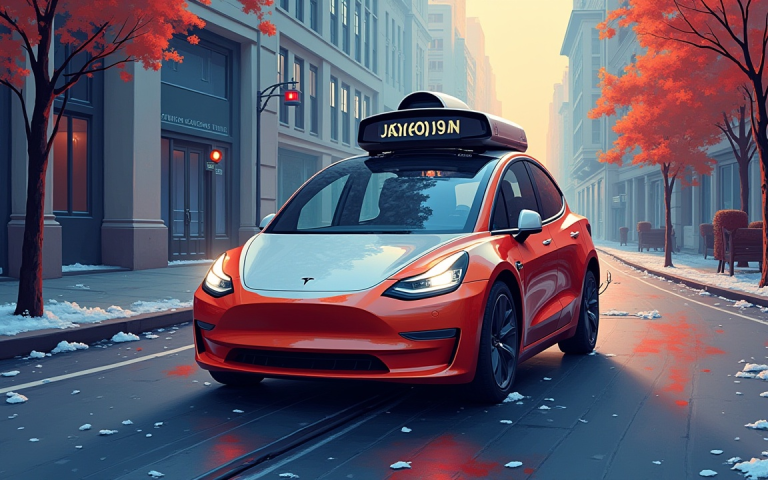The competition to dominate the autonomous ride-hailing market is intensifying, with Tesla and Waymo taking sharply different paths in their rollout strategies.
A month after Tesla launched its first robotaxi trial in Austin, Texas, CEO Elon Musk told investors that driverless Teslas could be available to “half the population of the US” by the end of 2024.
In contrast, Alphabet-owned Waymo, which has been testing commercial autonomous services for more than eight years, currently covers areas with just 3% of the US population.
The divergence highlights not just the speed of expansion, but also contrasting approaches to technology, safety, and regulatory navigation.
Tesla expansion targets vs Waymo cautious rollout
Tesla’s robotaxi trial in Austin began in June and forms part of Musk’s vision to deploy the service nationwide at what he calls a “hyper-exponential rate”.
The company argues that its reliance on cameras and artificial intelligence enables faster scaling without the need for detailed mapping. According to Musk, once Tesla perfects operations in a few cities, it can apply the system anywhere in the country.
Waymo, meanwhile, continues to rely on a methodical city-by-city approach. Its system uses high-definition maps and advanced sensors to ensure safety before phasing in driverless rides.
The company began testing in Phoenix more than three years before launching paid, fully autonomous services there in 2020.
By August 2024, it expanded to offer service at Phoenix airport terminals. It now operates in parts of San Francisco, Los Angeles, Austin, Atlanta, and the Bay Area.
Analysts say this difference in rollout speed has major implications. Some investors attribute much of Tesla’s stock value to the prospect of quickly scaling autonomous services.
Morningstar has projected that Tesla’s robotaxis may not achieve full deployment until 2028, but if successful, they could surpass Waymo’s market share by the end of the decade.
Safety challenges in Austin and beyond
Safety has become a central issue in the robotaxi race. While Musk emphasises that Tesla will not compromise on safety, authorities in Austin have already raised concerns over Waymo vehicles.
Austin police reported incidents where Waymo cars failed to respond correctly to officer hand signals or entered unsafe conditions. One vehicle drove into flood waters in May, forcing the passenger to escape.
In another case, during a charity walk, a Waymo car attempted to bypass a blocked road until officers disabled it by taping over its sensors.
Since March, police have issued three citations to Waymo vehicles, though officers note that the process of citing driverless cars is lengthy, limiting enforcement. Tesla’s fleet in Austin is still in its early stages, so authorities report limited interactions.
Technology contrasts and financial pressures
Waymo’s system is based on high-definition maps, LIDAR sensors, and a step-by-step AI process. Tesla relies on video from its cameras processed by AI software designed to mimic human driving decisions without pre-mapped instructions.
Waymo has tested elements of Tesla’s approach, but a research paper last year highlighted “challenges and limitations” in its performance.
Musk has set an ambitious goal of having “millions of Teslas operating autonomously” by the second half of 2025. This timeline comes as Tesla faces global sales pressure, with sharp declines reported in Europe.
Success in robotaxis is seen as vital for Tesla to offset headwinds in its core electric vehicle business.
Waymo’s financial results also reveal the cost of caution. Analysts estimate it lost between $1.2 billion and $1.5 billion in 2023, though projections suggest profitability could follow as costs fall and ridership expands.
Bank of America estimates point to the eventual sustainability of Waymo’s model, while Forrester analysts view Tesla’s method as a cheaper but riskier path.
Regulatory roadblocks and community engagement
Beyond technology, both companies face the challenge of navigating US regulations and winning public trust. Waymo has invested years in building community ties, such as meeting local organisations in Austin well before its launch. Representatives from the Texas School for the Deaf even tested rides before services began.
By contrast, Tesla informed school officials only shortly before its launch, and local leaders learned details from media reports. Regulatory challenges also remain uneven across the US.
For example, Waymo has targeted a 2026 rollout in Washington, D.C., but progress is delayed as the city council awaits transportation department recommendations.
Waymo has increased lobbying efforts, hiring three outside firms and circulating petitions to accelerate rulemaking. Meanwhile, Tesla has not engaged Washington officials to the same extent.
The rivalry between Tesla and Waymo highlights more than just corporate competition. It underscores how differing strategies—rapid expansion versus deliberate caution—may shape the future of autonomous ride-hailing.
Investors, regulators, and communities are now watching whether scale or safety will set the industry standard.
The post Tesla wants millions of robotaxis by 2025, but will Waymo win the long game? appeared first on Invezz

